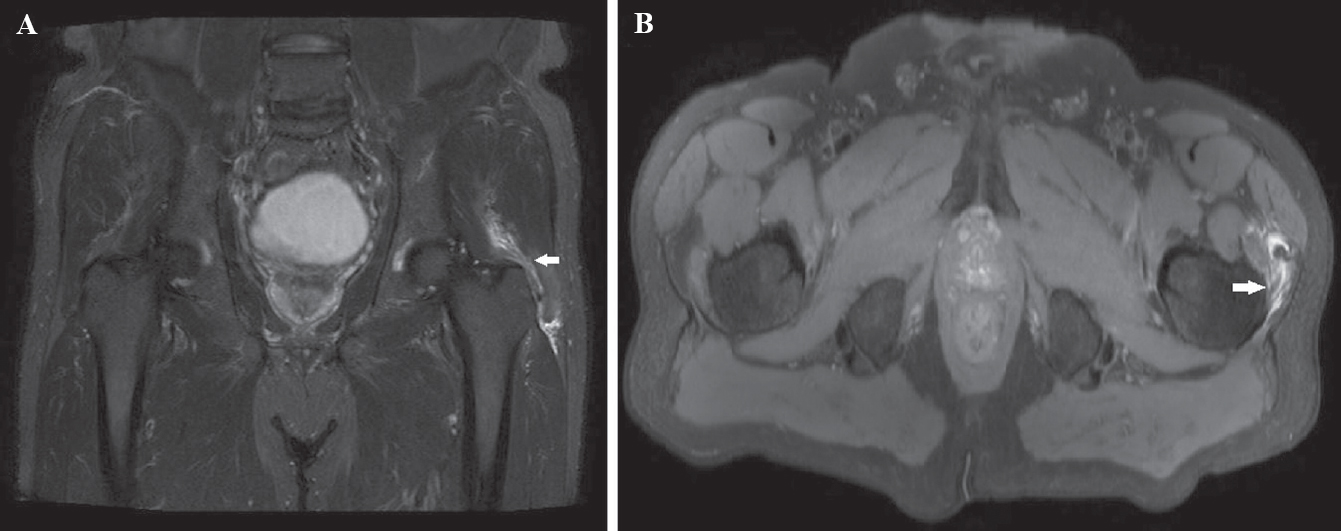Translate this page into:
A rare side-effect of fluoroquinolones
2 Department of Respiratory Medicine, QRG Health City, Faridabad, Haryana, India
Corresponding Author:
Kamal Gera
Department of Respiratory Medicine, QRG Health City, Faridabad, Haryana
India
kamalgera36@gmail.com
| How to cite this article: Kapoor S, Gera K, Chabbra GS. A rare side-effect of fluoroquinolones. Natl Med J India 2020;33:251 |
A 61-year-old male presented with complaints of pain over the left greater trochanter along with limping for 2 days. He had no other comorbid conditions including joint or tendon problems. There was no history of trauma. He had taken levofloxacin for an upper respiratory tract infection for 3 days before the onset of the above symptoms. He was not on any long-term medication including steroids. Physical examination revealed tenderness over the left greater trochanter but without erythema. MRI bilateral hip region [Figure - 1] showed mild-to-moderate hyperintensity involving tendons of the left gluteus medius and gluteus minimus near the insertion at the greater trochanter (marked by arrows) suggestive of tendinitis. It was diagnosed as levofloxacin-induced tendinitis due to the temporal relationship and absence of other causes (Naranjo scale score was 7: probable adverse drug reaction). Levofloxacin was stopped and he recovered fully within 10 days.
 |
| Figure 1: MRI bilateral hip region: Coronal image (A: short inversion time inversion recovery sequence) and axial image (B: proton density fat-sat sequence) showed mild-to-moderate hyperintensity involving tendons of the left gluteus medius and gluteus minimus near the insertion site at greater trochanter (marked by arrows) suggestive of tendinitis |
Fluoroquinolone-induced tendinopathy or tendon rupture is a rare side-effect, occurring in 0.14%–0.4% of otherwise healthy controls.[1] Ciprofloxacin and pefloxacin are the usual culprits; however, levofloxacin, ofloxacin and norfloxacin can also cause tendinopathy. Achilles’ tendon is the most commonly affected site in about 90% of patients. Although the mean time of onset of symptoms of tendinopathy is around 2 weeks after initiation of the offending drug, it can occur as early as 2 hours to as late as 6 months after starting the drug.[2]
Conflicts of interest. None declared
| 1. | Tsai WC, Yang YM. Fluoroquinolone-associated tendinopathy. Chang Gung Med J 2011;34:461–7. [Google Scholar] |
| 2. | Tam PK, Ho CT. Fluoroquinolone-induced Achilles tendinitis. Hong Kong Med J 2014;20:545–7. [Google Scholar] |
Fulltext Views
2,234
PDF downloads
2,748




